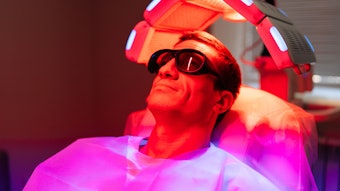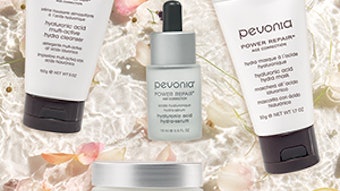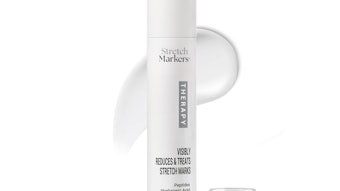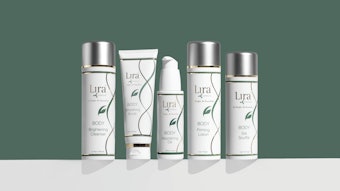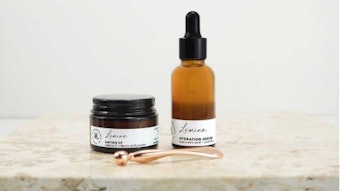It is estimated that more than 1 million new cases of skin cancer were diagnosed in the United States in 2007. While most skin cancers have excellent cure rates if detected and treated early, dermatologists stress that prevention is still the best medicine.
In fact, dermatologists are hopeful that the recent introduction of a new law aimed at warning Americans about the risks of indoor tanning devices and new sunscreen regulations could prevent skin cancer in future generations and reduce the estimated $1.5 billion annual financial toll associated with treating non-melanoma skin cancers alone.
In recognition of National Healthy Skin Month, dermatologist Sandra I. Read, MD, FAAD, instructor of dermatology at Georgetown University School of Medicine in Washington, D.C., spoke at the American Academy of Dermatology's SKIN Academy about the latest developments in skin cancer prevention, including a new study of the most common locations of melanoma in each gender.
“Exposure to ultraviolet (UV) light, whether natural sunlight or artificial light used in indoor tanning, is a carcinogen that studies have shown directly increases a person's risk of developing skin cancer,” said Dr. Read. “We're seeing an increase in skin cancers across all age groups, and the National Cancer Institute reports that melanoma is the second most common skin cancer in younger women aged 20–29. Because of this disturbing trend, lawmakers and regulatory agencies have proposed new initiatives to help protect Americans from this serious health threat.”
Men, women and melanoma
Dr. Read discussed how clinical studies remain an invaluable tool in further understanding skin cancer. Now, a new study published online in the Journal of the American Academy of Dermatology in March 2007 examined whether the location where melanoma occurred on the body varied by gender and changed over time along with lifestyle and clothing habits in the 1970s and in 2004.
The study, “Association between the anatomic distribution of melanoma and sex,” tracked 152 melanoma patients seen at the University of Pennsylvania dermatology clinic in 2004 and 397 patients seen between 1972 and 1977. Specifically, the authors of the study concluded:
* For the 2004 patients, men had a higher risk of developing a melanoma on their head and neck than women.
* In the 1970s, men were more likely to develop melanoma on their upper back, chest, and abdomen, while women during this time period were more prone to developing melanoma on their upper and lower extremities, particularly the lower legs and feet.
* Examining differences over time, women in 2004 were more likely to develop a melanoma on the trunk than the lower extremities.
* In 2004, women were more likely to develop a melanoma on their chests compared to the 1970s. In 2004, men were more likely to develop a melanoma on their lower legs compared to the 1970s.
“These findings closely mirror the melanoma patients that dermatologists treat in our practices today,” said Dr. Read. “Men tend to develop more melanomas on the head, neck and upper back—suggesting that they are not wearing sun-protective clothing, particularly wide-brimmed hats, or using adequate sunscreen on these areas. Also, women are now more likely to develop melanoma on their chests and upper backs, which indicates that they might be favoring the latest styles that expose more skin on these areas and forgoing proper sun protection in favor of fashion.”
The TAN Act
On September 27, 2007, President Bush signed the Tanning Accountability and Notification Act (TAN Act) into law, which dermatologists believe may help significantly reduce the incidence of skin cancer in Americans. The law calls for the U.S. Food and Drug Administration (FDA) to determine if the current language and positioning of warning labels on indoor tanning devices is adequate to effectively warn consumers of the known dangers of indoor tanning, including the risk of skin cancer.
“The indoor tanning industry is a $5 billion industry that attracts nearly 30 million users in the U.S. annually—2.3 million of which are teens,” said Dr. Read. “The Academy worked diligently with congressional leaders to develop this important bill, and we commend President Bush and all of the bill's sponsors for their commitment to reducing the incidence of skin cancer and helping save countless lives. By law, the indoor tanning industry will be accountable to consumers and present the facts about the dangers of their products.”
The new law will require the FDA to conduct consumer testing to “determine consumer understanding of label warnings.” It further requires the Secretary of Health and Human Services to report back to Congress in one year with the results, including “the measures being implemented by the Secretary to significantly reduce the risks associated with indoor tanning devices.”
FDA's 2007 proposed sunscreen rule
In an effort to improve the information available to consumers when purchasing sunscreen, the FDA proposed new regulations for formulating, testing and labeling over-the-counter sunscreens that the Academy believes will help the public make knowledgeable decisions about protecting themselves from the dangers of the sun. Since the FDA released the sunscreen monograph in 1999, the Academy has urged the FDA to include requirements for ultraviolet A (UVA) coverage in sunscreens and to increase the SPF allowed for sunscreens—both of which are addressed in the 2007 Proposed Sunscreen rule.
Sunlight consists of two types of harmful rays—UVA rays and UVB rays. The UVB rays are the sun's burning rays, which are blocked by window glass, and are the primary cause of sunburn and skin cancer. UVA rays, which pass through window glass, penetrate deeper into the dermis, or base layer of the skin. UVA rays can cause suppression of the immune system, which interferes with the immune system's ability to protect an individual against the development and spread of skin cancer. Cumulative UVA exposure also is known to lead to signs of premature aging of the skin, such as wrinkling and age spots.
“Since the current SPF only provides a measurement of protection against the sun's shorter wavelength UVB rays, the proposed one-to-four star rating of a sunscreen's UVA protective effect—corresponding to low, medium, high or very high—will allow consumers to more easily understand the degree of protection afforded by a particular product against the sun's long wavelength UVA rays,” explained Dr. Read. “The Academy also commends the FDA for requiring the use of a warning label on sunscreen products to emphasize the dangers of sun exposure and to educate the public on how to avoid sun damage.”
The public comment period for the rule ends in November, at which point the FDA will begin finalizing and implementing the rule.
To further increase public awareness that exposure to the sun is the leading cause of skin cancer and that sunscreen products can reduce the incidence of skin cancer and save lives, the Academy launched the AAD Seal of Recognition program. Sunscreen products with an SPF of at least 15 that provide broad-spectrum protection from both UVA and UVB rays can apply for the AAD's Seal of Recognition on their packaging.
“With so many products on the market that contain sunscreen and new formulas being introduced every year, the Academy has now made it easier for consumers to know which ones provide the best protection simply by looking for the AAD's Seal of Recognition logo,” said Dr. Read.
Dr. Read added that dermatologists are hopeful that the current changes in sunscreen labeling, regulating indoor tanning devices and future research on skin cancer will help curb the dangerous trend of rising skin cancer rates.
